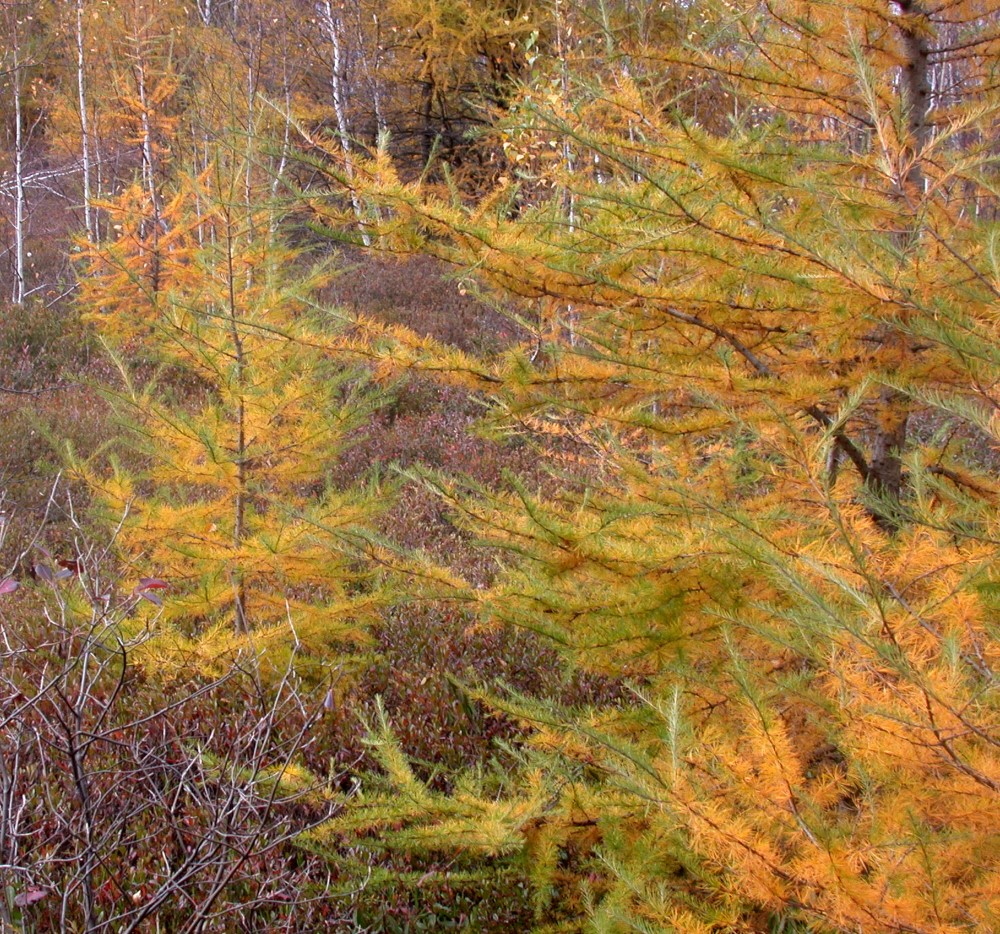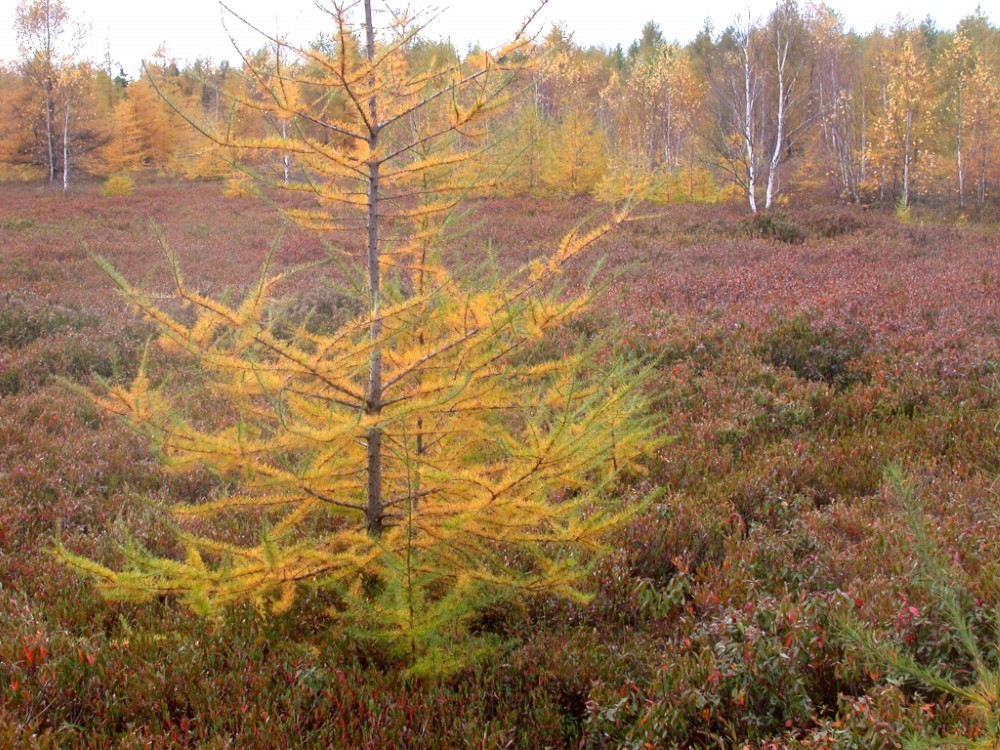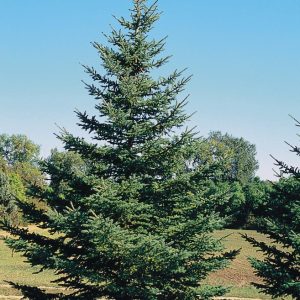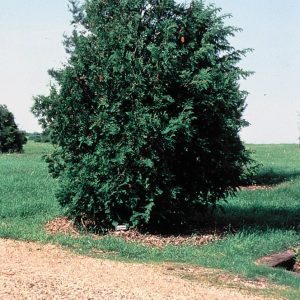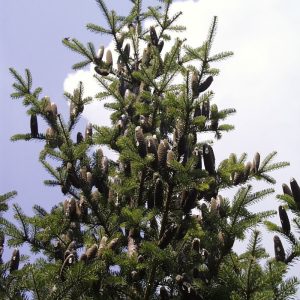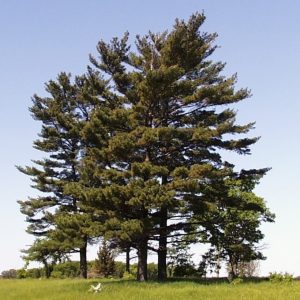Though the tamarack tree resembles other evergreens, it is actually a deciduous conifer, meaning that it sheds its needles every fall. It commonly grows in swamps and sphagnum bogs but also grows in upland soils. The flaky dark reddish-gray bark of the tamarack tree resembles Black Spruce. The pale green needles are soft and short (about an inch long) and grow in brush-like tufts on small knobby spurs along each twig. The cones of the tamarack are also fairly small—round, and less than an inch long. Very often you will see the tall tamarack trees growing in pure stands. Just before the needles drop in autumn, the needles turn a beautiful golden color, affording the stands of tamarack a striking contrast to the fall foliage. Tamarack trees are well adapted to the cold. The tree’s natural range is from Labrador to West Virginia, northern Illinois and New Jersey, across southern Canada to Northern British Columbia Alaska. It grows near sea level in northern regions, and at higher elevations in the southern extreme of its range.
Larix laricina
• Tamarack
• Size: 30’-80’
• Spread:15’-30’
• Sun: Full Sun, Part Shade
• Soil: Loam
• Moisture: Medium
• Bloom: Non-Flowering

